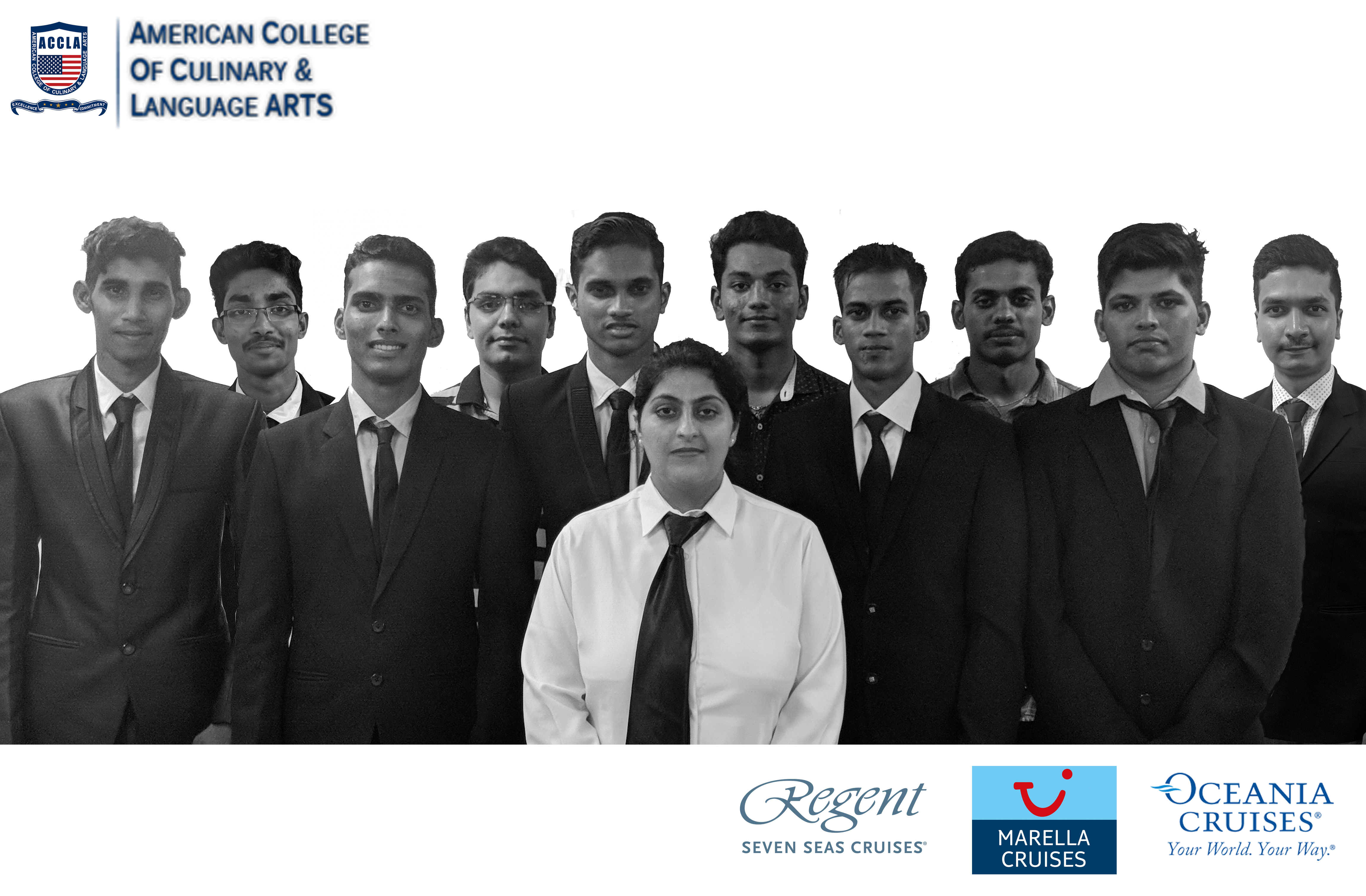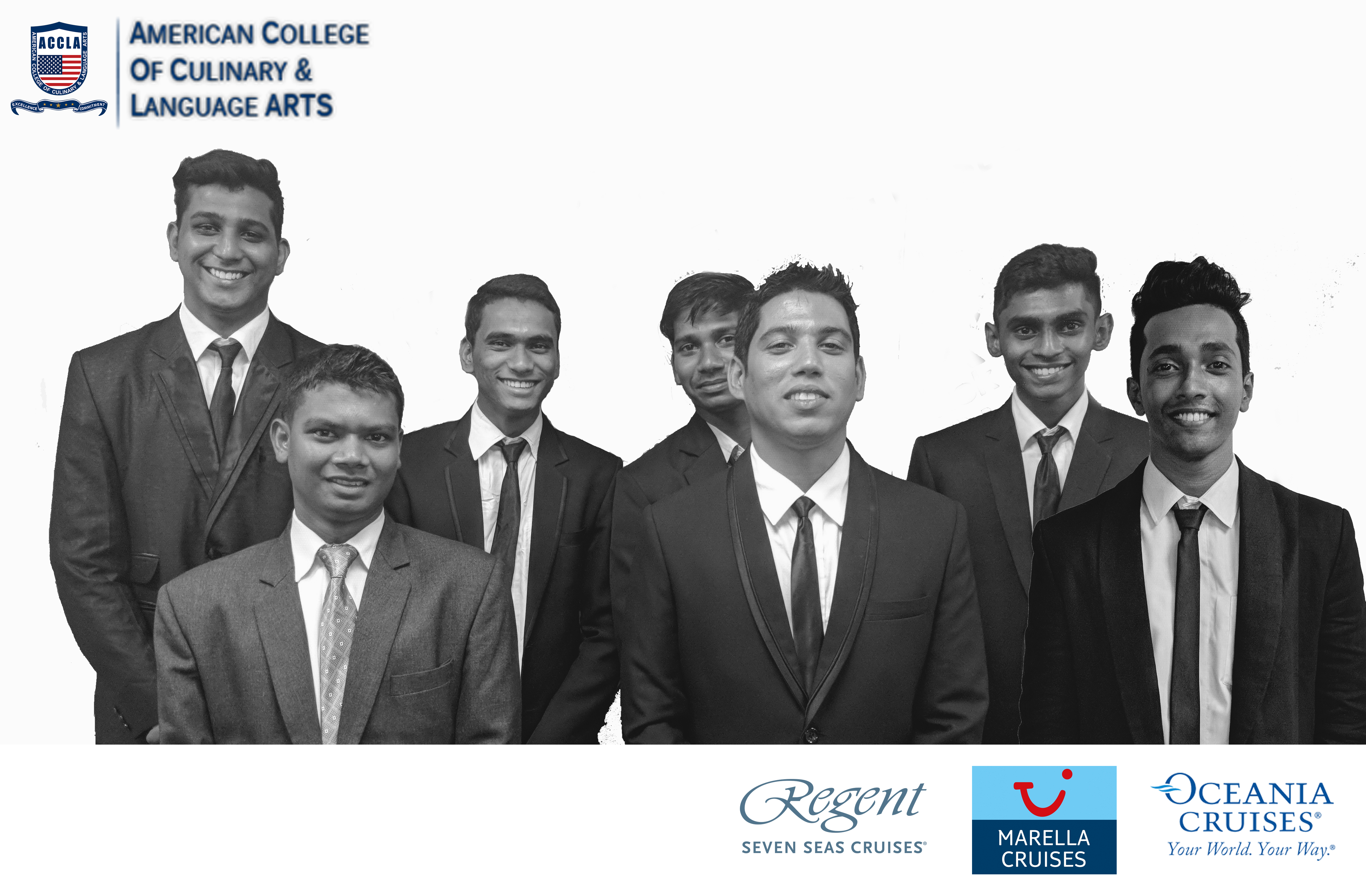Tag Archives: ACCLA India
The Art Of Cooking
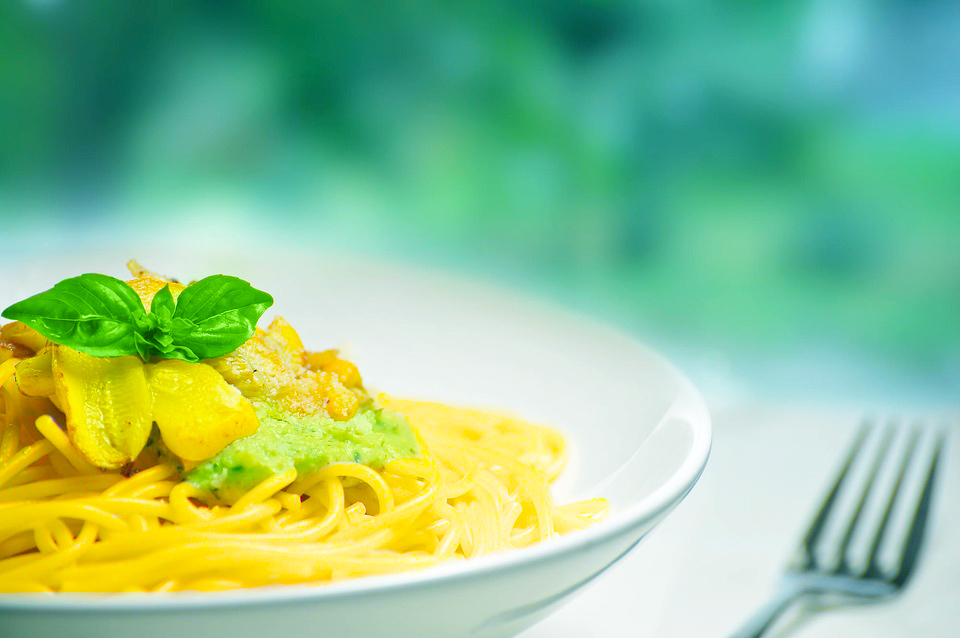 For most of human history, cooking has been viewed as a necessary skill, without which humans are resigned to be foragers and hunters. Over the years, with the opulence of empires and their show of wealth, cooking transcended that realm into something of extravagance and show.
For most of human history, cooking has been viewed as a necessary skill, without which humans are resigned to be foragers and hunters. Over the years, with the opulence of empires and their show of wealth, cooking transcended that realm into something of extravagance and show.
From basic food forms like pies and roasts, food became more dainty and sophisticated to include newer creations such as bruschetta and salads. More recently, cooking and its final products have focused on technique, appearance and quality, causing many to refer to this skill as culinary art.
Art is loosely defined as visual, auditory and performing artifacts that express the author’s imaginative, conceptual idea, or technical skill intended to be appreciated for their beauty or emotional power. Much of this can be applied to the culinary arts.
People in the world of culinary arts, including cruise ship chefs, are expected to have in-depth knowledge of food science, nutrition and diet. Students are taught this art just as one would painting or sculpture – including its history, specific techniques and creative expression.
By nature, an artist uses a blank canvas to stimulate the senses. Cooking a dish and its presentation can cause similar effects. Heston Blumenthal, for example, created a stunning dessert out of something quite classic. He turned the favourite Italian dessert tiramisu into a potted plant.
The dessert is served in a clean pot and appears to be a sapling planted in a soil. To the eye, soil is hardly appetising, initiating a tasteless, bitter, perhaps even unsavoury effect. In this way, it stimulates the eyes and the imagination. Once the diner comes closer, the aroma of the chocolate soil and the mint or basil plant stimulates the olfactory senses.
This changes the diner’s approach to the dish, inviting him or her to try it. Finally, the taste buds are stimulated and the diner feels comfort from tasting something familiar, joy at having overcome the initial reaction and from the pleasant surprise.
Art can be constituted as a reaction or a relationship between the viewer and the object or experience. A similar example in the modern art space is of Thai artist Rirkrit Tiravanija, whose early installations in the 1990s sought to bring people together by cooking meals such as pad thai and Thai green curry for visitors.
This may not be culinary art but shows that art is simply a sensory effect on its audience. They may not perceive it as beautiful or – in the case of culinary art – delicious, but that is their perception of the creator’s vision.
Culinary artists undergo years of rigorous training in skills, food safety, the understanding of chemistry and thermodynamics, and more, to give them a firm foundation of how ingredients react with each other and the elements around them.
The creativity rests on their own imagination to design dishes that evoke positive sensory responses from diners so that people keep coming back for more.
For cruise ship chefs, their jobs on board may not give them the full freedom to practice their creativity, particularly lower down in the hierarchy, but in celebrity kitchens or once they climb the ladder, the world is their oyster.
Show off Your Skills As a Cruise Ship Chef
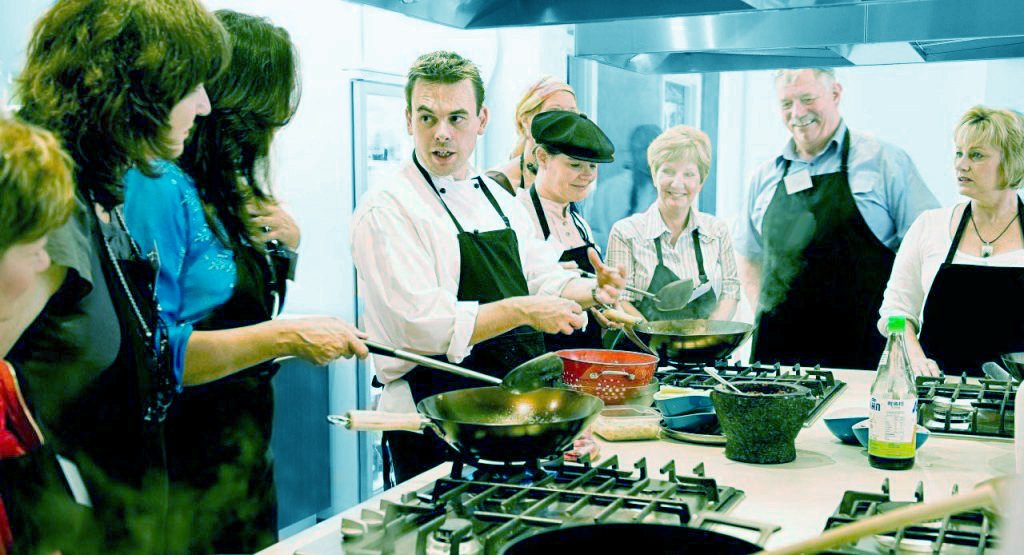 Cruise ship chefs jobs don’t always have to involve toiling away in a galley below deck, wondering about the delighted faces of guests who enjoy your food. Today’s travelling demographic often includes guests who enjoy culinary experiences – not just indulging in it, but also learning more about what they eat.
Cruise ship chefs jobs don’t always have to involve toiling away in a galley below deck, wondering about the delighted faces of guests who enjoy your food. Today’s travelling demographic often includes guests who enjoy culinary experiences – not just indulging in it, but also learning more about what they eat.
Cooking classes and demonstrations are among the popular activities guests like to engage in while on board. These include private classes or small group lessons of around five to 10 where guests can share one-on-one experiences with chefs, understand more about technique, and take away memories of great food and new recipes.
Many cruise ships offer classes with celebrity chefs, but they are not always available on board. Displaying good cheffing skills, warm yet professional behaviour and in-depth knowledge of the culinary arts can land you a cooking or demonstration class.
Azamara cruises, for example, gives cruise ship chefs a chance to teach interested guests how to make sushi or sashimi and whip up their favourite risotto. On Crystal Cruises, the excursions team schedules complementary food-themed tours in port, so guests can connect what they learn with you on board to the food they eat on land.
On Holland America, private cooking classes allow guests to understand the secrets of great pesto and making the perfect jerk chicken, even as celebrity chefs lead demos at regular intervals. Exclusive cooking classes, which are more often than not priced in the top range, are coveted by guests eager to learn specific techniques and skills used by those in celebrity chef kitchens. This would mean passing on knowledge learnt as part of the team upholding the reputation of the celebrity chef on board. It’s a big responsibility.
A variety of river cruises specializing in unique culinary experiences for guests are joining the bandwagon. Owing to their courses, often focusing on the Mediterranean region, the vessels make port often, allowing cruise ship chefs to take guests opting for their exclusive cooking classes ashore to source ingredients.
Scenic Cruises, for example, has remodeled its dining rooms on board the Scenic Diamond, Scenic Sapphire and Scenic Emerald to house new private cooking emporiums. This space boasts cooking stations, cheese and wine cellars and audio-visual screens for up to 10 guests to easily view the cooking instructions from the chef leading the class.
Similar cruises with exclusive cooking classes see cruise ship chefs head ashore with the guests to source local ingredients such as conch in the Bahamas or Bordeaux chocolate in France, head back on board and show participants how to cook with them.
In a similar vein, cruise ships are also offering classes on wines and their pairings, with in-depth knowledge to guests on everything from appropriate glassware to grape origins. The Queen Mary 2 launched its Carinthia Lounge, which has a Wine Academy – a space where the chief sommelier and the wine team lead exclusive classes on various topics, regional tastings and producer workshops.
Being a good cruise ship chef can open a mine of opportunities even on board, so you can try something different through the course of your time at sea.
How To Ace Fine Dining as a Cruise Ship Chef
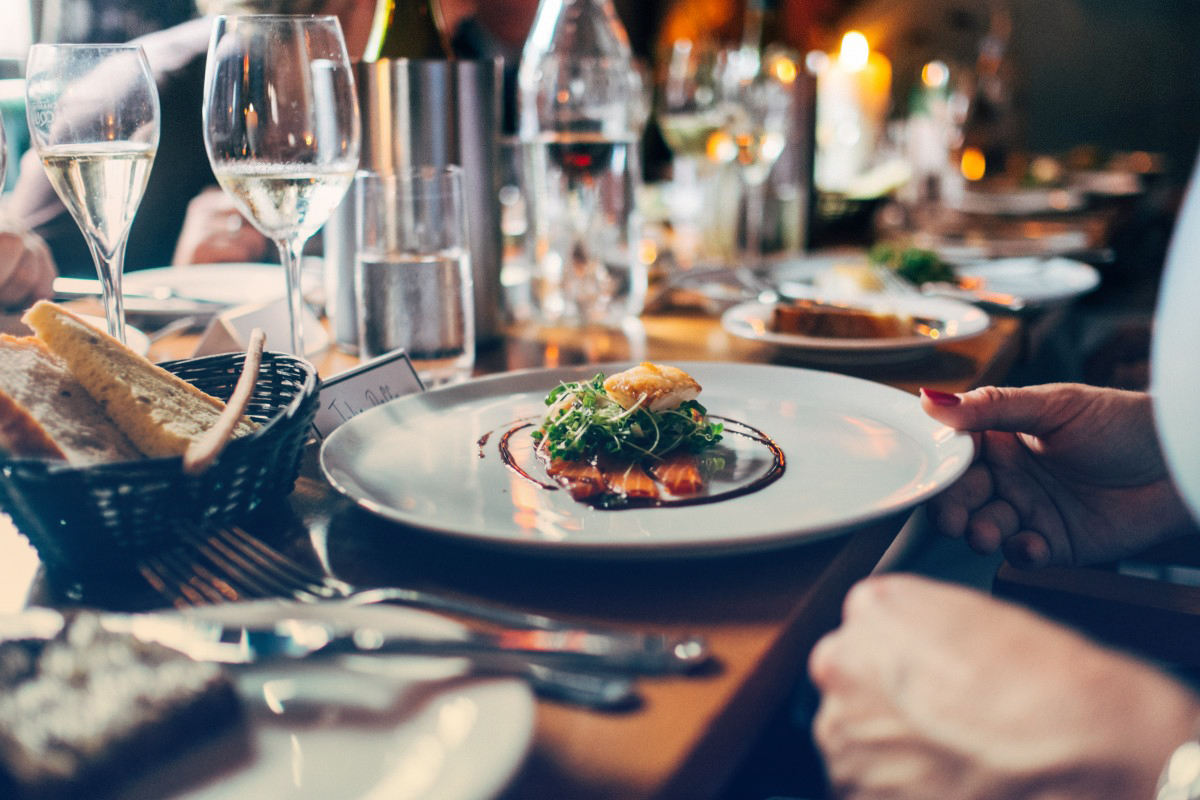 Fine dining is a big part of cruise ship vacations. Guests pack for the occasion and arrive with high expectations. Cruise ship chef jobs that cater to them demand perfection and passion every day.
Fine dining is a big part of cruise ship vacations. Guests pack for the occasion and arrive with high expectations. Cruise ship chef jobs that cater to them demand perfection and passion every day.
Learn & practice
The key to doing well at a fine dining restaurant on a cruise ship is to absorb as much information as you can. It may not be possible to land a cruise ship chef job at a fine dining restaurant on your first contract, but keeping your eyes and ears open will get you there faster.
When you have time, speak to the cruise ship chefs who work there and understand more about the demands. Note the importance of presentation and flavour, and how they go together to create a dish that excites all the senses. After all, fine dining is an experience.
In between contracts, you can attempt to practice some of the new skills you learnt, or perhaps even pick up new ones.
Work for celebrity chefs
If you get the chance, opt to work at celebrity chef fine dining restaurants – whether on board or on land. The standards are of a completely different level altogether as celebrity chefs have their entire brand hinging on their names.
They are not always working at the restaurant but has a head chef in his/her place who has control over the quality of the food. The celebrity chef will come in now and then and make time for staff, so it is good to interact with them and note all the advice they offer.
Working at a celebrity chef’s fine dining restaurant can mean very long days but the experience pays off in the long run.
Follow the rules
On cruise ships, hygiene is paramount. Every cruise ship restaurant must follow international standards for ensuring a clean and sanitised work atmosphere. Failing this could lead to the cruise ship being suspended from service.
Some of the basic rules include personal hygiene and correct methods of storing and preparing food. Many fine dining restaurants on cruise ships offer demos and open kitchen meals for a more interactive environment for guests. This makes personal hygiene, kitchen cleanliness and appearance doubly important.
Top dishes
Every restaurant has its go-to dish that guests most look forward to enjoying. As a cruise ship chef at a fine dining restaurant, your job is to learn how to make it perfectly. But that doesn’t mean you should stop there. Go ahead and try to reinvent dishes during your time off. Take a basic and play with it.
Some of the most popular dishes at fine dining restaurants on cruise ships around the world include the tuna tataki and miso black cod at Nobu’s Silk Road and Sushi Bar at Crystal Serenity, Silversea’s nine course tasting menu at its Asian restaurant Seishin, Seabourn’s chestnut and porcini mushroom soup with honey-spiced squab-and-fig empanada, 36-ounce porterhouse steaks on the Seven Seas Mariner, and lobster ravioli and osso buco at Disney Fantasy’s Palo.

